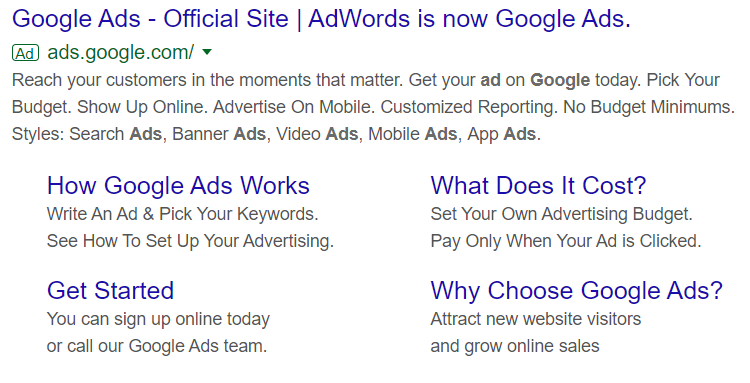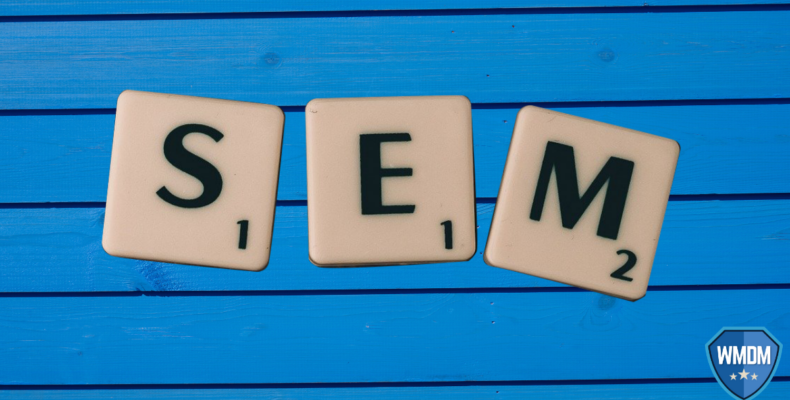This is Part 3 of our Search Engine Marketing (SEM) series which will focus on branded and high-intent keyword campaigns. If you’re just joining us now, you can find the other parts here:
- Part 1: Keyword, CPC, CTR, and More: Your 101 Guide to Search Engine Marketing
- Part 2: SEM 101 (Part 2): How Does Quality Score Work in Search Engine Marketing?
- Part 4: SEM 101 (Part 4): Low-Intent and Competitor Keyword Campaigns
Keywords are the heart of any SEM campaign; therefore, any great campaign needs to start with understanding the types of keywords to categorize them accordingly.
As mentioned in Wingman’s previous post, a Quality Score is heavily dependent on the relationship between the chosen keyword, destination landing page, and the overall user experience on your website. Falling short in any of these categories may bring down your ad’s Quality Score, but pairing keywords perfectly with a coordinated landing page and great user experience could net you an amazing Quality Score.
Unfortunately, despite your best efforts, there are some keyword campaigns that are incredibly difficult to reach a “high” Quality Score. Often, it’s not worth the time and money to squeeze out extra points as it could be better spent elsewhere. Depending on the intent of the campaign, you may find that even a score of 5 should suffice.
Your keyword can be divided into 4 types: Branded, High-Intent, Low-Intent, and Competitors. In this blogpost, we’ll be covering branded and high-intent keyword types and show you what a suitable Quality Score for each of them should be.
Branded Keywords
These are keywords that are associated with your brand, such as a company’s name like Nike or Adidas. If a user types “Nike” into a search engine, it’s safe to assume they’re interested in purchasing Nike products or learning more about the company. Creating an advertisement for your branded keyword simply adds another search result for users to visit your website; however, there is an inherent issue with this.
If a user typed in a branded keyword (such as your company name) into search, posting an advertisement with a branded keyword has little significance in persuading the user to click your website. Therefore, you would be giving up advertising dollars for no additional prospects.
Below is an example of Google creating an advertisement for “Google AdWords” despite being the top rank for this keyword organically.

Why would an advertiser want to spend their money on advertisements when a visitor would have ended up on their website anyway? It offers little to earn net new customers. There are 3 main reasons:
- Cost: The cost-per-click on branded keywords is dirt-cheap. It doesn’t take much to claim the top of your ad page rank with a couple of cents per click.
- Ad Ranking: As your website is already filled to the brim with branding, your ad relevance outmatches any competitor’s. Your CTR, or click-through rate, should be much higher than your other campaigns by its very nature.
- Competitor Denial: Most importantly, branded keyword campaigns are intended to claim ad real estate, denying competitors from exploiting your brand presence to win new customers. Big and small competitors are known to use these tactics—small companies use it as an aggressive market entry tactic, while large ones capitalize on their competitors’ market share. In the example below, Microsoft’s search engine, Bing, is purchasing ad space on Google to convert users to use Bing search instead.

Thankfully, unless you’re in a highly competitive industry, this isn’t very common. This is because your competitor would need to tailor a landing page specifically to your branding and keywords. They would also need to pay more money than you would for the same keyword and rank position. Nevertheless, you may have competitors that will continue with the campaign anyway, as ad space always comes before organic search results. Mitigate the chances of competitors snatching ad real estate on your branded keywords by bidding on them.
How do I write copy for Branded Keyword ads?
It’s important to note that ads revolving around branded keywords should not include a sales-heavy approach. If a user is already searching for your company, it is safe to assume they are interested in shopping with you. Instead, offer new or interesting information about your company. Write about your long-standing history, current corporate responsibility initiatives, or new offerings like free shipping.
Branded Keyword Campaign Quality Score Goal
If you’re building a branded keyword campaign, aim for a 7 or greater. WMDM can help you with getting those final points on your branded keyword campaign.
High-Intent
High-intent keywords are one of the most expensive set of keywords within your campaign—but for good reason. While they may cost the most, they also drive the most sales. Compared to users searching branded keywords, users searching with high-intent keywords are actively looking for a solution to their needs but are not sure who can provide that solution. The intent may be time-sensitive, or the user is doing more research on which competitor can provide the most value. In either case, maximizing your Quality Score for this campaign will do wonders for your business’ cost-per-click and return on investment (ROI).
How do I write copy for High-Intent ads?
High-Intent keywords can be broken down into 2 categories: Immediate purchase, and product keywords. Customers searching with keywords from either one of these categories indicate a strong intention to commit to a purchase. Let’s use an imaginary company, Flower Depot, as our example for brainstorming keywords. “Buy flowers free shipping” or “buy flowers online” are keywords that clearly indicate a need for flowers—and fast. A forgetful boyfriend looking for Valentine’s Day or a wife looking for her son’s graduation are all examples of high-intent users.
Good SEM ad copy will use one or both categories to get the message across and drive sales. The first category is “Immediate Purchase keywords,” which creates a sense of urgency to buy your product and, when coupled with a timely holiday, can do wonders.
Immediate Purchase Keywords
- Buy
- Shop
- Free Trial
- Discount
- Coupon
- Free Shipping

When you target prospects search with immediate purchase keywords, you know what they need. Your job with these campaigns is to immediately attract your customer’s attention and create a landing page that makes the buying process as easy as possible. You can further drive purchase intent by offering additional incentives, such as free shipping over a given amount of dollars or a return policy within a fair number of days.
Product Keywords
Product keywords leverage well-known brands to drive traffic to your website. Here are a few examples that may work for your business:
- Branded searches (D&G, Charmin, etc.)
- Specific Products (Google Chromecast Ultra, iPhone 6S, etc.)
- Product Categories (Flowers, sunglasses, TVs, etc.)
- Location (Canada, Calgary, Vancouver, etc.)
- Best (Best earphones, Best tiles, Best smart locks, etc.)
In the example below, Amazon leverages Charmin’s trusted brand name to drive traffic and purchases to their website. Of course, this tactic only works if the landing page is to sell Charmin products. Driving traffic to Amazon’s main page—or worse—to the wrong product would create a negative customer experience, lowering your Quality Score and ad ranking and dramatically increasing cost-per-click.

It’s worth noting that these keywords work very effectively for e-commerce websites, but not all of them may work for your business. Finding what works best through A/B Testing will ensure your campaigns are sending the right message out to your customer.
High-Intent Keyword Campaign Quality Score Goal
As these keywords are highly competitive and require a landing page tailored to your advertisement—some advertisers may even create a landing page for each search ad—realistically speaking, a good Quality Score for high-intent campaigns is 7-8 or more. The higher the Quality Score, the better the ROI, the lower the cost, and the higher the ad rank.
Also, don’t forget long-tail keyword campaigns! Long-tail keyphrases are phrases with more than 4 keywords in a given search entry. The more words, the longer the “tail”. Keyword searches are moving toward natural language as Google Search becomes better at recognizing long-tail keywords, so it isn’t a bad idea to start considering them. These campaigns take more time to build and strategize, and your conversions may be few and far between, but long-tail campaigns are a better long-term search engine marketing strategy with a higher ROI.
There are some tips and tricks that you can take advantage of to improve your Quality Score. In fact, A/B testing and good campaign structure alone can net you a Quality Score of 6 or 7. However, high-intent keywords are the most important category to drive traffic and sales to your website and building these campaigns requires additional support. WMDM has built numerous search engine marketing campaigns with various intents in mind.
Conclusion
We’ve covered a lot of information on 2 of the 4 keyword intents used to find your business. Our next blog post will cover the final 2 keyword intents: Low-intent and competitors.
While Wingman has seen several clients focusing exclusively on high-intent, branded keywords can also be a critical piece to your SEM campaign. If you’re looking for a SEM manager you can trust, WMDM has your back.

